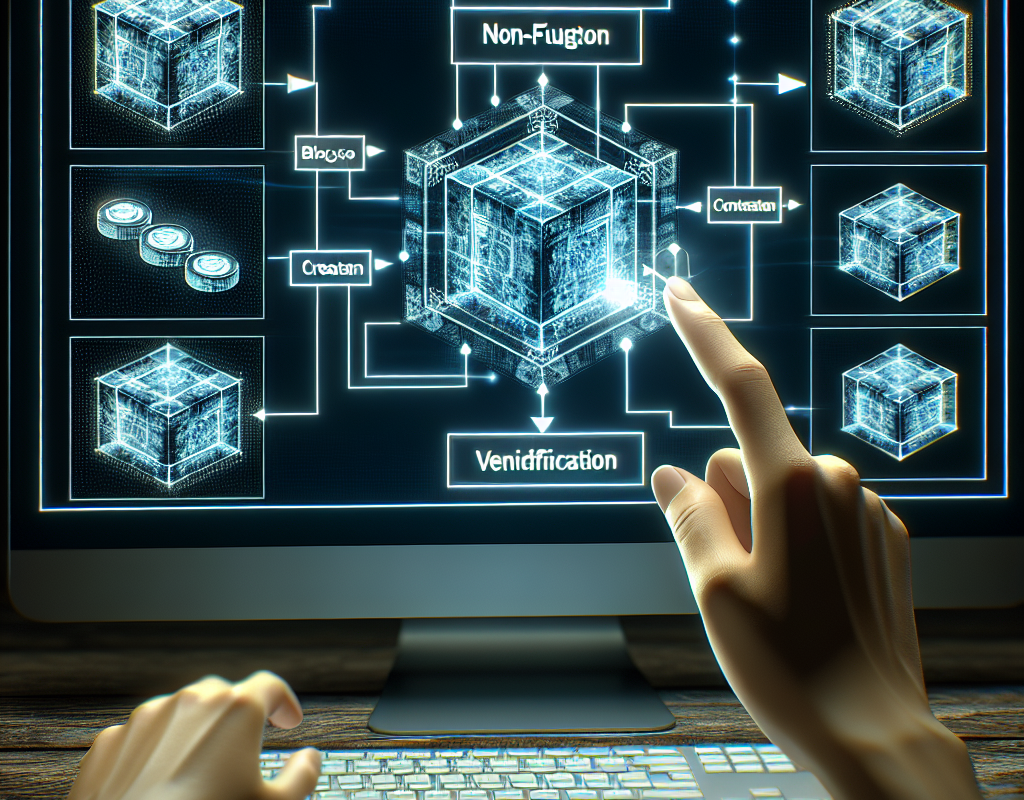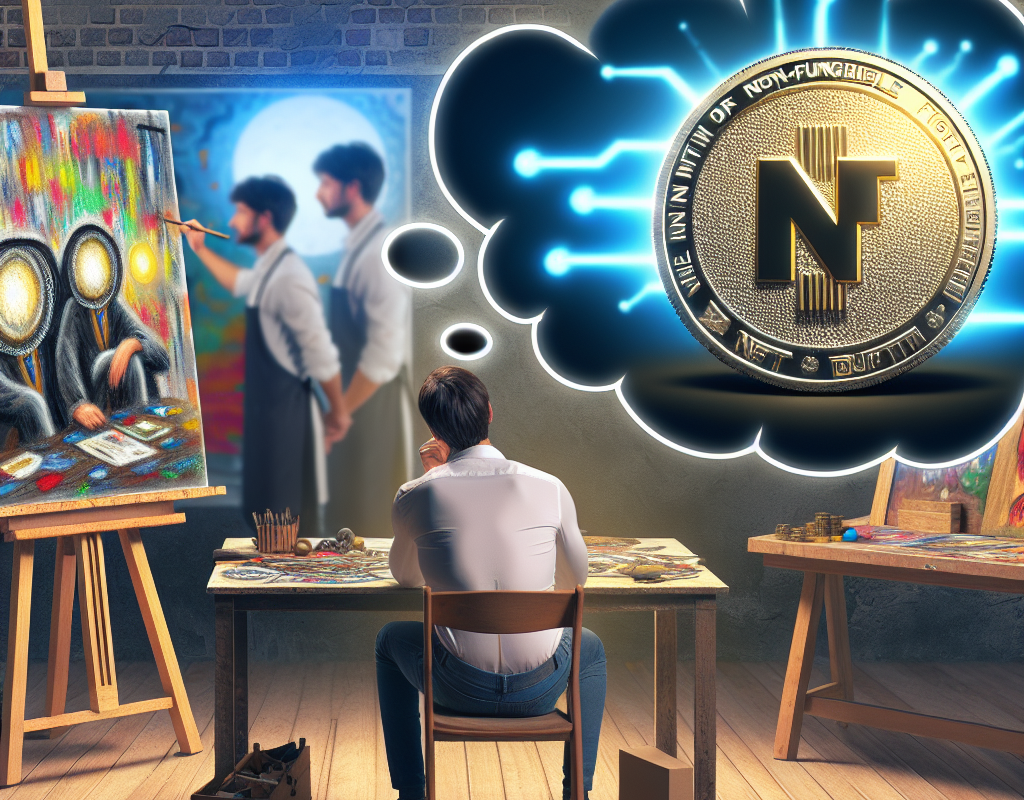In recent years, you’ve probably heard the buzz around NFTs, or non-fungible tokens. But what does it mean to mint an NFT, and why is everyone talking about it? You’re in the right place if you’re curious about this digital phenomenon. This blog post will guide you through the fascinating world of NFTs—what they are, how they’re created, and why they matter. By the end, you’ll clearly understand the process and its significance.
NFTs

Before we dive into minting, we must grasp what NFTs are. NFT stands for non-fungible token. Unlike cryptocurrencies like Bitcoin or Ethereum, which are fungible and can be exchanged for each other, NFTs are unique items. Each one has its own value and can’t be swapped on a one-to-one basis.
NFTs are essentially digital certificates of ownership. They exist on blockchain technology, ensuring their uniqueness and authenticity. Anything can become an NFT, from digital art to music and even tweets. This versatility means the market is expanding rapidly, attracting creators and collectors worldwide.
The concept might sound complex, but it is like collecting rare baseball cards. Each card has individual worth based on rarity, condition, and demand. Similarly, NFTs hold value as digital collectibles, with ownership recorded on a blockchain.
The Rise of Blockchain Technology
To comprehend “what does it mean to mint an NFT,” we first need to understand blockchain technology. A blockchain is a decentralized digital ledger recording transactions across many computers. This network ensures security, transparency, and immutability, making it ideal for verifying NFT ownership.
Blockchain’s impact extends beyond finance. It has revolutionized various industries by providing secure, tamper-proof records. For NFTs, blockchain technology assures buyers that what they’re purchasing is genuine and unique.
Ethereum is the most popular blockchain for NFTs, thanks to its smart contract capabilities. These contracts automatically execute actions when certain conditions are met, streamlining the NFT creation and trading process.
What Does It Mean to Mint an NFT?
Now, let’s explore what minting an NFT entails. Simply put, minting is creating an NFT on a blockchain. When you mint an NFT, you transform a digital file into a token. This token is then stored on the blockchain, ensuring its authenticity and uniqueness.
Minting involves a few key steps. First, you need to choose a digital file you wish to convert into an NFT. Next, you’ll use an NFT marketplace or platform that supports minting. These platforms provide tools to upload files, add metadata, and set terms for ownership.
Once you’ve completed these steps, your digital file becomes an NFT. It’s now ready for sale, trade, or display in a digital gallery. This process may seem daunting, but platforms like OpenSea or Rarible make it accessible even for beginners.
Choosing the Right Platform
Selecting the right platform is essential when minting an NFT. Numerous marketplaces cater to different needs and requirements. Some focus on digital art, while others specialize in music or virtual real estate. Researching and choosing a platform that aligns with your goals is crucial.
OpenSea is a popular choice for its ease of use and vast community. It supports various file types, making it versatile for creators. Other platforms like Rarible, Foundation, and SuperRare offer unique features and cater to specific niches.
Consider factors like fees, supported formats, and community when choosing a platform. By selecting the right marketplace, you can ensure a successful minting experience and attract potential buyers.
The Cost of Minting
While minting an NFT can be exciting, it’s essential to consider the costs involved. Creating an NFT isn’t free; you’ll encounter fees. These expenses are primarily related to blockchain transactions, known as “gas fees.”
Gas fees cover the computational power required to execute transactions on the blockchain. These costs fluctuate based on network demand. High demand results in higher fees, which can impact your decision to mint an NFT.
Platforms may also charge listing or commission fees. These additional costs can vary, so it’s crucial to factor them into your budget. By understanding the expenses involved, you can make informed decisions about minting NFTs.
What Makes NFTs Valuable?
NFTs have taken the digital world by storm, but what makes them valuable? Their worth depends on various factors, including rarity, demand, and the creator’s reputation. Unique, one-of-a-kind items tend to fetch higher prices than mass-produced content.
Collectors and investors seeking digital assets drive the demand for NFTs. Limited edition releases or collaborations with famous artists often attract significant attention, increasing their value.
Additionally, the underlying blockchain technology adds value by ensuring authenticity. Buyers can trust that their purchase is genuine and unique, with ownership securely recorded.
The Role of Creators and Artists
Creators play a pivotal role in the NFT ecosystem. They bring diverse talents and skills, transforming their works into digital collectibles. Minting an NFT allows artists to connect directly with buyers, eliminating intermediaries and enhancing profit potential.
For artists, NFTs offer new revenue streams and creative freedom. They can experiment with various styles, mediums, and formats, reaching a global audience. The digital nature of NFTs enables artists to showcase their work without physical constraints.
Furthermore, NFTs provide opportunities for collaboration and co-creation. Artists can partner with other creatives, merging styles and ideas to produce unique pieces. This collaborative spirit enriches the NFT community and fosters innovation.
Navigating the NFT Market
Entering the NFT market can be overwhelming, but understanding the landscape is essential for success. The market is dynamic, with trends and preferences constantly evolving. Staying informed and adapting to changes can help you thrive in this digital realm.
Networking is crucial for navigating the NFT market. Engaging with other creators, collectors, and enthusiasts can provide valuable insights and opportunities. Social media platforms like Twitter and Discord are excellent for building connections and staying updated on trends.
Researching and monitoring the market can also inform your decisions. Keeping an eye on successful projects, emerging artists, and popular styles can guide your creative strategy. By staying agile and informed, you can better position yourself in the NFT market.
The Environmental Impact of NFTs
While NFTs offer exciting possibilities, it’s essential to consider their environmental impact. Blockchain technology, particularly Ethereum, consumes significant energy, contributing to carbon emissions. This environmental concern has sparked debate and led to calls for sustainable solutions.
Efforts are underway to address these issues. Ethereum is transitioning to a more energy-efficient system, reducing its carbon footprint. Additionally, some platforms and artists are exploring eco-friendly alternatives like “proof of stake” blockchains.
Creators and collectors can also contribute to sustainability. Supporting eco-conscious platforms and projects can help minimize environmental impact. By making informed choices, the NFT community can work towards a greener future.
Security and Ownership
Security and ownership are vital aspects of the NFT ecosystem. Blockchain technology ensures the authenticity and uniqueness of NFTs, but it’s crucial to safeguard them from theft or loss. Storing NFTs securely is essential to protect your digital assets.
Digital wallets play a key role in NFT ownership. These wallets store your NFTs and provide access to the blockchain. Choosing a reputable wallet with robust security features is vital to safeguard your investments.
Understanding the terms and conditions of NFT ownership is also important. Some NFTs come with restrictions or limitations, affecting how you can use or display them. Familiarizing yourself with these terms ensures you make informed decisions about your purchases.
Overcoming Challenges in the NFT Space
Like any emerging technology, NFTs present challenges that creators and collectors must overcome. Understanding and addressing these obstacles is crucial for success in this digital landscape. By navigating challenges effectively, you can maximize the potential of NFTs.
One common challenge is the lack of clear regulations. The legal landscape surrounding NFTs is still evolving, and understanding your rights and responsibilities is essential. Staying informed about developments can help you comply with laws and protect your interests.
Technical complexities also pose challenges in the NFT space. Navigating blockchain technology, smart contracts, and marketplaces can be daunting. Investing time in learning about these aspects can enhance your confidence and competence in the NFT ecosystem.
Exploring the Future of NFTs
The future of NFTs is bright and full of possibilities. While the current market is thriving, new developments and innovations are on the horizon. You can capitalize on emerging trends and opportunities by staying informed and adaptable.
Interoperability is a key focus for the future of NFTs. Connecting different blockchains and platforms can enhance the NFT experience and broaden their appeal. Interoperability allows for seamless transfers and exchanges, expanding the possibilities for creators and collectors.
Integrating artificial intelligence and virtual reality can also shape the future of NFTs. These technologies open new avenues for creativity and interaction, offering immersive experiences and dynamic content. Exploring these possibilities can elevate your NFT endeavors.
Conclusion
In conclusion, understanding “what does it mean to mint an NFT” is essential for anyone interested in this digital revolution. The process involves creating unique digital assets, secured and authenticated on a blockchain. With numerous platforms and market considerations, minting NFTs offers exciting opportunities for creators and collectors alike. So, why wait? Take the first step and join the NFT community today! Let your creativity and passion shine through this digital medium, and explore all that the world of NFTs has to offer.



